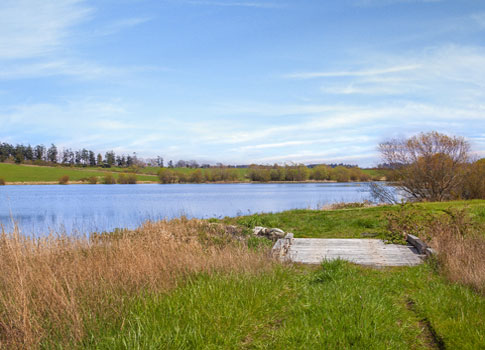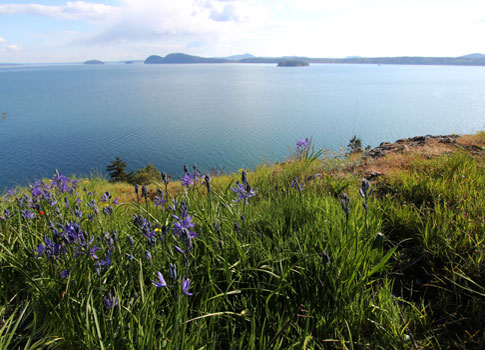Island Dispatch | April 2016
SNAKES, BATS AND VOLES, OH MY!
Studying the Residents of our Nature Preserves
Adam Leache
What do garter snakes, bats, and voles have in common?
They have faces only a mother could love, often elicit squeals of fright, and are subjects of research conducted this past summer on nature preserves owned by The San Juan Preservation Trust.
Islands provide researchers an excellent laboratory for scientific inquiry into why species occur in isolated places. The Galapagos Islands of Ecuador offer a tremendous opportunity to study many species that are uniquely distributed there. Similar research is underway in the San Juan Islands that is exploring the distribution and variation of species in our own island setting.

HISTORIC FOOTPRINTS
Preservation Trust’s 37th Annual Meeting
We are pleased to announce that local historian Mike Vouri will be guest presenter at our 2016 Annual Meeting. Vouri recently retired after two decades as Chief of Interpretation and Historian for San Juan Island National Historical Park. Vouri, who has written extensively about the history of San Juan Island, has teamed up with his wife Julia on a new book that will be released in the near future. The presentation will provide a fascinating glimpse into the early days of island life. “I’ll be looking at preservation in terms of historic footprints. Our islands are full of them. They remind us of who we are and how far we have come,” says Vouri.
Join us on May 7 at the San Juan Island Yacht Club, just a short walk from the ferry landing. Over lunch with your family of SJPT members, Executive Director Tim Seifert will brief you on recent accomplishments and current projects. Following the lunch program, an optional, naturalist-led hike on the recently-acquired (but not yet paid for!) Zylstra Lake property is offered to all.
To register for the Annual Meeting and optional field trip, please call us at (360)378-2461 or mail $20 per person to PO Box 759, Friday Harbor, WA 98250. We hope to see you on May 7!
Saturday, May 7 • San Juan Island Yacht Club • 273 Front St., Friday Harbor Luncheon 11:30 am–1:30 pm • Hike 1:30–3:30 pm
IN SERVICE TO ISLAND CONSERVATION
The San Juan Preservation Trust’s mission to protect and care for island land has been successful thanks to you, the people who voluntarily support this work with financial gifts and sweat equity. Our volunteer Board of Trustees, who live in communities throughout the archipelago, are representing you as they strive to ensure the effectiveness and integrity of our work. Contributing expertise in the areas of finance, law, fundraising, land management, communications and governance, they grapple with the big questions and plan for the long-term. The SJPT Nominating Committee, chaired by trustee Geoff Dunbar, has put forth a stellar slate of trustee candidates for 2016, and current SJPT members are requested to vote prior to the May 7 Annual Meeting. These individuals come from the fields of architecture, science and academia, community planning and business, and they have at least one trait in common – they care deeply about preserving the San Juan Islands.
The candidates are:
At Large Positions: Willy Borner – Shaw Island, Sarah Hart – San Juan Island, Joann Otto – San Juan Island, Phil Sherburne – Decatur Island
Lopez Island: Nancy Greene – Lopez Island

